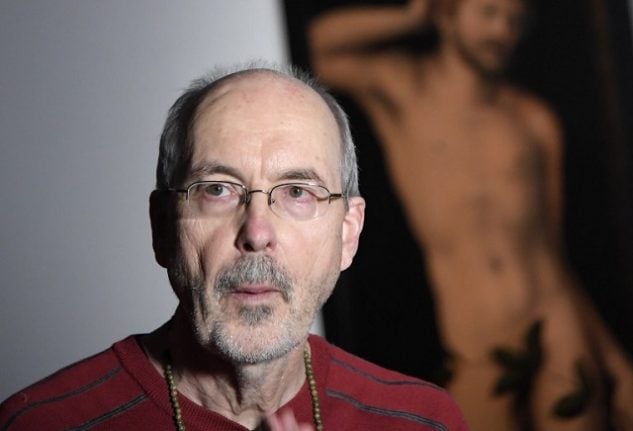Four decades after he first worked in the Tuscan capital, the New Yorker regarded as one of the pioneers of video art has returned for a major exhibition that explores the links between his 20th-21st century output and paintings completed between 400 and 600 years earlier.
“It has been really beautiful being in Florence again,” Viola, 66, told AFP. “It has been completely emotional just to feel the whole vibe of everything here. We have come back home and that is what it is all about.”
“Electronic Renaissance” opens to the public on Friday and runs through July 23rd, with the main collection housed at the Palazzo Strozzi and other works spread over a number of other museums and galleries throughout Tuscany.
“Bill is one of the most important living artists. He is one of the fathers of video art and this is the biggest and most complete exhibition of his work ever done,” said Strozzi director Arturo Galansino.
“But it is so much more than that. For the first time, his installations have been put together with the masterpieces that inspired them.”
Parents' death
The exhibition also includes photos and memorabilia from the two years Viola spent working as a video producer with an avant garde art group in Florence in the mid-1970s.
Although at the time he did not see the city's artistic treasures influencing his own creative direction, Viola was struck as a young man by the presence of art in everyday life in Italy, and that influenced him long before the overt references to Renaissance art began to emerge in his output from the mid-nineties onwards.
“As a boy from Queens in New York, growing up he had always seen art in a museum, not in the street, in a church etcetera,” said Galansino.
“Now he talks about the big fresco cycles in churches as art installations.”
Kira Perov, Viola's wife and career-long collaborator, jointly curated the exhibition.
“Bill was really interested in what there was to see in Florence but he only consciously drew on it many years later,” she said, describing how his change of direction was influenced by the death of his mother and father in the 1990s.
“He came face to face with death, and also our two children were born. And it was then that the whole of emotional content, the humaneness of Renaissance art hit him.
“And it really hit him. He became very much influenced by the extreme emotions that were being experienced in these beautiful paintings… it was about grief, it was about loss and that very much shaped his work.”
A modern past
Viola himself says: “I just kinda felt it in my gut, outta here, you know. That is where it came from for me, somewhere down deep – you know, because my parents had gone.”
The first product of the new direction was “The Greeting”, a work inspired by the artist known as Pontormo's “Visitation,” (1528-29), which depicts the Virgin Mary greeting her pregnant cousin Elizabeth.
In Viola's video version, three women interact in a low-key but intense way in a super slow-motion encounter based on the kind of chance street-corner meeting that had come to fascinate the artist.
Other highlights of the exhibition include the juxtaposition of Florentine artist Paolo Uccello's fresco, “The Flood and Receding of the Waters” with Viola's 2002 video installation, “The Deluge (Going Forth by Day), and his “Man Searching for Immortality/Woman Searching for Eternity,” with Weimar artist Lukas Cranach's “Adam, Eve”, a 1528 work borrowed from the Uffizi Gallery.
Nearly all of the works on show, underline the link between the religious themes that dominated Renaissance art with the spirituality that is ever present in Viola's meditations on birth, death and the cycle of life.
“I know Bill is a religious man but I could not say what his religion is,” says Galansino.
“But yes, like the Renaissance painters, his work is very spiritual. So in a way what we are proving with this exhibition is how modern the past is.”
Want more arty articles? Check out our Culture section here.
By Angus MacKinnon



 Please whitelist us to continue reading.
Please whitelist us to continue reading.
Member comments